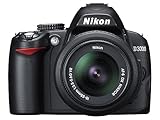When shooting action and sports in low light or indoors your lens becomes much more important than your camera body. Pros are using expensive glass like the Nikon 70-200mm f/2.8 or some exotic prime to gather lots of light. The Nikon 70-200 is a tad over $2000 though. Luckily there are more affordable alternatives like the Sigma and Tamron versions of the 70-200mm f/2.8. These are good matches to lower priced bodies like the D3100 and D5000 that offer comparable performance for almost a third of the price.
Price Comparisons (updated 8/8/11)
| Sigma | Tamron | Nikon | |
| Amazon | $949 | $769 | $2200 |
Just a quick primer about apertures; aperture is described by an f-stop, f/2.8 for example. The lower the number the larger the opening in the lens to collect more light. f/1.4 is considered very fast because you get more light and can maintain a faster shutter speed. f/1.4, f/2, f/2.8, f/4, f/5.6, f/8, f/11, f/16, and f/22 are the standard full stops. Each step up will halve the shutter speed. In general, a lower f-stop number translates to less depth of field (DOF).
The cheap (but still very good) Nikon 18-55mm f/3.5-5.6 kit lens is just too slow and short to be of much use in low light. The Nikon 55-200mm f/4-5.6 (or 55-300) would give you more reach, but it too will be too slow as it zooms in. For example, in an indoor hockey rink I’d estimate that shooting at ISO 1600 with f/2.8 gets you 1/250 second. f/4 would drop that to 1/125 and f/5.6 would drop it to 1/60. That’s a very big difference and would allow motion blur to become a problem.
I’ve shot a group of friends playing broomball at a local rink with my 18-200mm f/3.5-5.6 and it was a struggle. Even with ISO between 1600-3200 my shots were underexposed if I tried forcing the shutter to 1/250. I could have lowered it, but then motion blur would have started kicking in. I don’t think I even bothered sharing those photos with anyone.
Low light action (pretty much everything not in sunlight) is just one of those things that’s flat out hard. Pros can throw thousands of dollars into their gear, but we don’t really have that luxury. A cheaper DSLR like the D3100 or D5000 is up to the job, but they really need the help of a f/1.8 or f/2.8 lens to keep the shutter as fast as possible.
Depending how much reach you need you could even use the Nikon 35mm f/1.8 to get as much light as possible for cheap. If you do need more reach then the Sigma and Tamron 70-200mm f/2.8 lenses become some of your few options. The Sigma seems to have better autofocus capability and the Tamron has slightly better image quality.
Bang for your Buck
The Sigma has shot up in price making the Tamron a better value. There is also a new Sigma lens with image stabilization built in, but it is almost $1400.
 Tokina 11-16mm f/2.8 AT-X116 Pro DX for Nikon
Tokina 11-16mm f/2.8 AT-X116 Pro DX for Nikon









 When the D5000 came out Nikon needed something new to fill in the low end of their line up. The D3000 is pretty much the exact same camera as the D40x and D60 that previously held this spot. Aside from a .5″ larger LCD screen, there’s not going to be much difference between them. If you’ve never touched a DSLR before and your budget is tight, then this is a good place to start. It will be a good solid camera, but until Nikon refreshes it with a new model I don’t think the D3000 offers the best bang for your buck.
When the D5000 came out Nikon needed something new to fill in the low end of their line up. The D3000 is pretty much the exact same camera as the D40x and D60 that previously held this spot. Aside from a .5″ larger LCD screen, there’s not going to be much difference between them. If you’ve never touched a DSLR before and your budget is tight, then this is a good place to start. It will be a good solid camera, but until Nikon refreshes it with a new model I don’t think the D3000 offers the best bang for your buck. The D5000 is a big step up from the D3000 in terms of technology and functionality. The most visible difference is the tilt and swing LCD screen, but I don’t think it’s that big of a deal. Internally, the D5000 has a much newer CMOS sensor than the D3000. This is the same sensor in the D90 and it provides much better performance at higher ISO settings. It also inherited built in chromatic aberration correction from the D90 which removes fringing that can appear in brightly lit shots. You also get the ability to take video.
The D5000 is a big step up from the D3000 in terms of technology and functionality. The most visible difference is the tilt and swing LCD screen, but I don’t think it’s that big of a deal. Internally, the D5000 has a much newer CMOS sensor than the D3000. This is the same sensor in the D90 and it provides much better performance at higher ISO settings. It also inherited built in chromatic aberration correction from the D90 which removes fringing that can appear in brightly lit shots. You also get the ability to take video. The D90 sits at the top of Nikon’s consumer DSLR line up. From here there’s a fairly big jump to the prosumer D300. There’s two things that really set the D90 above the D5000: controls and lens compatibility.
The D90 sits at the top of Nikon’s consumer DSLR line up. From here there’s a fairly big jump to the prosumer D300. There’s two things that really set the D90 above the D5000: controls and lens compatibility.